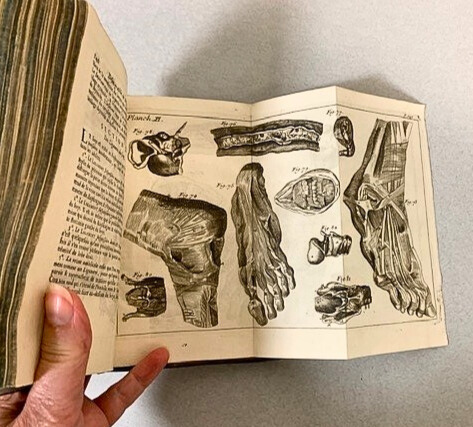
Syndesmology is the branch of regional anatomy focused on the study of ligaments. Its founder, Josias Weitbrecht, wrote the first comprehensive manual of ligaments in 1742, giving this new area of interest a proper start and full attention. He described more than 90 connective tissues in the human body. The work was illustrated with 82 engravings which impress with their accuracy, quality, and attention to detail. The illustrations were done by three artists: Andreas Grecow and his two pupils, Gregorius Katschalow and Iohannes Sokolow.
“Syndesmologia sive historia ligamentorum corporis humani” got attention from the medical world. Translated into other languages, it soon became famous in Europe. Weitbrecht inspired many authors, who referred to him and his masterpiece when writing on anatomy, even though they mostly knew his work from translations, not the Latin original. The earliest translation (1752) by Pierre Tarin was French. It was followed by an anonymous German translation done from the French one in 1779, and finally the book was translated into English by Robert Harrison in 1829. According to Emmanuel Kaplan, who compared all of these translations, the Latin text was reduced from the original 278 pages to 144 pages in the French version and to only 62 pages in English translation. Kaplan, an American orthopedist, was also the author of a modern English translation (1969). He worked from the unabbreviated Latin text, and he included the full set of original illustrations and a biographical and historical note on Josias Weitbrecht. That publication gave the author and his work a new life.
Josias Weitbrecht (1702-1747) was a German professor of medicine and anatomy associated with the University of St. Petersburg. He studied in Tübingen but moved to Russia to pursue medicine. He obtained the doctoral degree from the University of Königsberg, commonly known as the Albertina, which was then in its heyday. He worked as a contract professor of physiology but struggled to renew his contract with the university. He died in 1747, shortly after managing to secure his position there. As his legacy, he left us his masterpiece on ligaments, “Syndesmologia,” as well as the first description of the construction and function of the intervertebral disc, “Compendium anatomicum” (1729). This was a catalog of the anatomical collection of Frederik Ruysch including 2,000 embalmed specimens, which Tsar Peter the Great bought for his Kunstkamera (Peter the Great Museum of Anthropology and Ethnography) in St. Petersburg.

Falk Library has the abridged French translation. “Desmographie ou description des ligaments du corps humain” (Paris, 1752) is bound in plain brown leather and has tainted edges and marble end papers, typical for 19th-century bindings. The illustrations are jammed into 11 folded plates.
The copy was donated to the library by Dr. Thaddeus Osial and can be viewed in the Rare Book Room by appointment.
~Małgorzata Fort